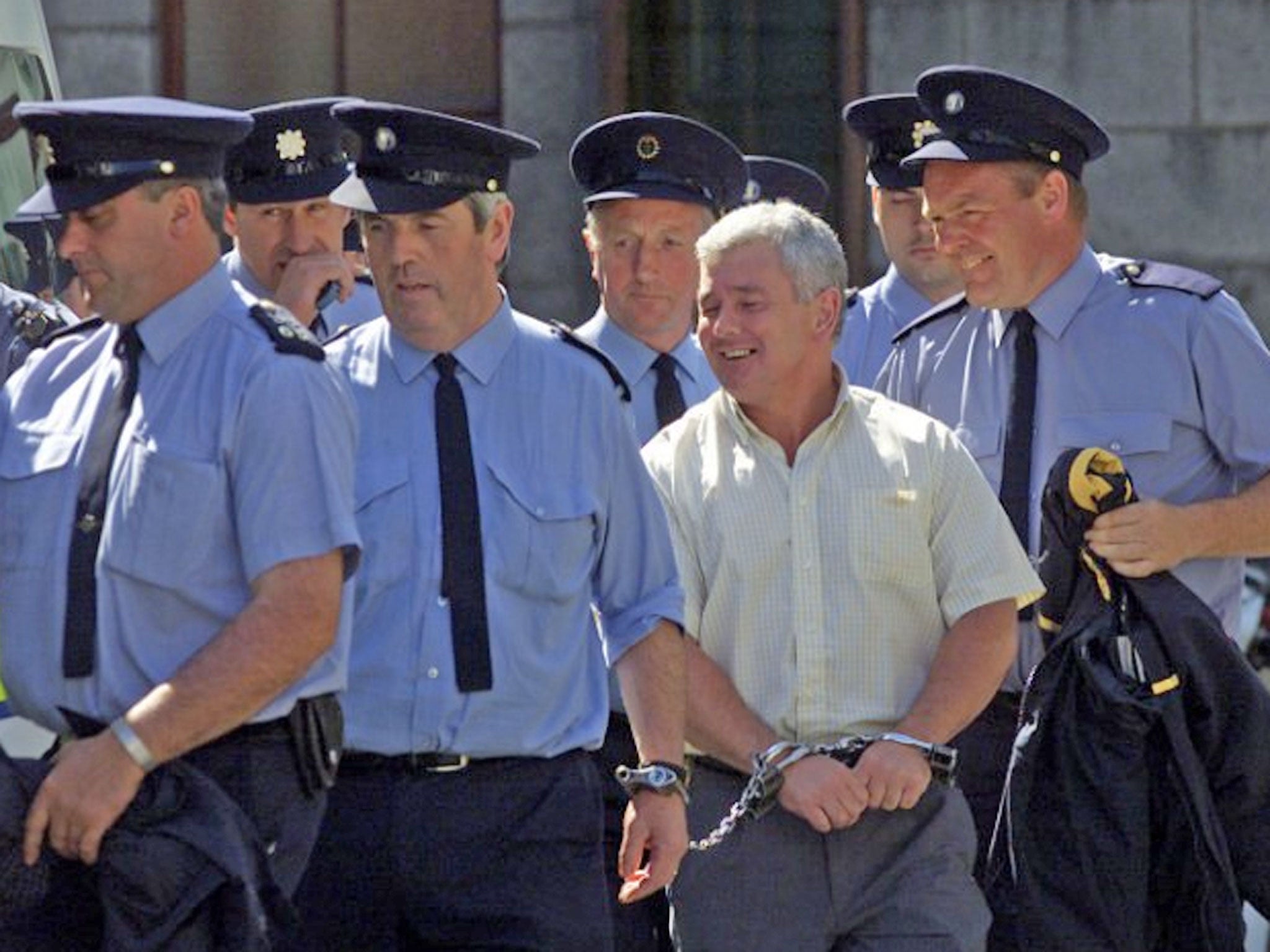John Gilligan: Dublin gangster who became too famous for his own good
The police couldn’t do it. The courts couldn’t do it. But now, the man linked to the killing of journalist Veronica Guerin, has been scared out of Ireland by his criminal rivals

Gangsters and drug lords had prowled the backstreets of Dublin long before the emergence of John Gilligan, but since the 1990s he has been among the most notorious of them – despite being behind bars for some 20 years.
Linked to the murder of journalist Veronica Guerin and the importation of huge quantities of drugs into Ireland, he has deliberately kept himself in the public eye even while serving time.
He was certainly not forgotten by the Dublin criminal underworld. Since his release in October 2013 it has become clear that rival gangsters are determined to kill him.
They nearly managed it earlier this month when they sent a gunman who cornered him in a friend’s bathroom and repeatedly shot him. Two weeks later they targeted his minder and clinically assassinated him in the street. Since Gilligan emerged from prison he has been as brazen as ever, flashing his trademark cocky grin for photographers and exuding an air of invincibility.
But the four bullets which hit him in the bathroom attack changed all that and this week a very different Gilligan was on show. He looked gaunt and shaken as he was taken in a wheelchair under police escort from hospital to the ferry which took him out of Ireland – reportedly to seek refuge with relatives in Birmingham. The new fearful Gilligan had a gash over one eye caused by a bullet which grazed him. Little wonder that one of his last utterances before sailing away was: “I have to get out of here.”
Irish police are not clear exactly who is out to get him: it could have been somebody he crossed before he went to prison, or somebody he offended inside, or somebody he had pressurised for money since his release.
One theory is that he is in the sights of another Dublin career criminal, now living in Spain, who is regarded by several police forces as a major supplier of drugs to Ireland, the UK and elsewhere.
The theory goes that Gilligan’s criminal celebrity, in stirring up much public attention, was making life difficult for gangsters who prefer to operate with a lower profile.
Clearly someone has decided that Gilligan would be better off dead. A source immersed in the often casually brutal Dublin underworld explained: “A lot of these guys try to operate under the radar as much as they can. They’re trying to get in drug shipments and it’s just creating problems for them. Gilligan just keeps opening his big mouth.” Part of the difficulty in pinning down exactly who is responsible for the shootings is due to a fluctuating range of gangs who regularly engage in lethal feuds over drugs, money and sometimes personal issues.
“There are new faces coming to the fore all the time,” according to the same source. “Very few of them make it beyond 40 – you just have one godfather murdered and suddenly there’s a new name up and around.”
It was the 1996 killing of Veronica Guerin which brought Gilligan to public notice and galvanised the Irish authorities.
A risk-taking crime correspondent, she had waged a high-profile newspaper campaign against Gilligan and other crooks. Despite being beaten and shot in the leg, she persisted until she was shot dead in broad daylight.This was not regarded as an ordinary murder, the Irish Prime Minister of the day calling it “a grave threat to our democracy”.
In the aftermath of the killing police targeted Gilligan and broke up his gang, introducing new laws and introducing a witness protection programme.
A year after the murder he was arrested at Heathrow en route to Amsterdam carrying several hundred thousand pounds in cash. After a three-year legal battle he was extradited to Dublin, where he was acquitted of the Guerin murder though the court said it had “grave suspicions” about him.
But he was given a 28-year sentence – a record – for importing 21 tons of drugs. It was later reduced on appeal to 20 years, it was still viewed as a reflection of the fact that he had helped flood Ireland with drugs.
A judge lectured him: “Never in the history of Ireland has one person caused so much wretchedness to so many – a haemorrhage of harm that it is unlikely to heal even in a generation.”
During his years in jail he was a notably troublesome inmate, mounting a series of appeals and legal challenges which meant his picture – always grinning – was often in the papers.
He fought a running battle with the Criminal Assets Bureau, the agency set up specifically to seize his drug money and his properties. He was certainly very rich: among his assets was a large-scale equestrian centre which includes a 3,500-seat showjumping arena. Today nobody knows whether he is broke or has large amounts of money hidden away.
What is certain however is that since the Guerin killing the problem of the violent drug culture is posing more problems than ever. Many more drugs are being seized, around 700 firearms are recovered every year and now gangs are even using bombs against each other – almost 100 last year.
Criminal Assets Bureau boss, Chief Superintendent Eugene Corcoran, admitted last year: “We’ve seen an escalation in the level of violence, and the number of deaths has vastly increased. These are very dangerous people.”
Gilligan has sailed away and would clearly be ill-advised ever to return. His era may be over but his unwelcome legacy is a new generation of violent career criminals.
Bookmark popover
Removed from bookmarks